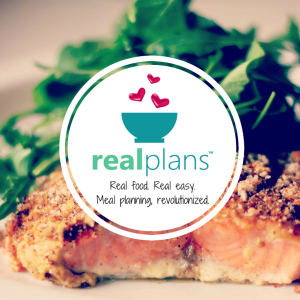
So many of us are working very hard to clean up our eating habits and source fresh, organic, local foods from farmers, but we still live in a toxic environment at home. There are over 500 chemicals in the average home — many are used for cleaning and body products. It just doesn’t make sense to spend all that time and money on great food and yet continue to use products the have so many toxic chemicals in them.
These products don’t work any better than their natural or non-toxic counterparts, and they damage the environment and may jeopardize our long-term health.
Check out the company before you use the products
Third party ecologos and product labels are used in marketing and can be misleading. For independent reviews, use Consumer Report’s Eco-Labels.org to find out what claims on labels really mean and if they’re actually regulated. You can also use the U.S. Department of Health and Human Services’ Household Products Database to look up specific products and find out their ingredients. Another option is to go to the company’s website or contact the company to find out what they put in their products.
Toxic cleaners your mother used
I don’t know about you, but my mother was a cleaning fanatic. She would cometize everything from dishes to counter tops to bathrooms. Everything was so sterile, my poor dog had nothing to smell in the house but comet. It’s no wonder we all had trouble with gut bacteria. It was all destroyed by comet! Don’t do that in your home!
Chlorine bleach
Chlorine bleach is one of the oldest cleaners and one of the harshest. Chlorine bleach kills all kinds of germs, molds and mildew on contact. But it is very harsh if it comes into contact with your skin. Manufacturers include chlorine bleach in a wide variety of cleaning products as well as some laundry and dishwasher detergents.
Ammonia
Undiluted ammonia is highly irritating to the eyes and respiratory system. As my organic chemistry teacher used to say “if you can smell it you are receiving it into your body.” Ammonia is good for cutting through grease and cleaning windows, but it is hard to avoid “receiving it” when you are using it.
Together, ammonia and bleach create a very toxic gas so should NEVER be used together!
What to look for
Look for green and non-toxic cleaners that don’t contain chlorine, alchohols, triclosan, triclocarbon, lye, glycol ethers, or ammonia. Choose cleaners that are labeled petroleum-free, 90% biodegradable in 3 days, or phosphate-free, VOC-free, and solvent-free.
Non Toxic Solutions
Hydrogen peroxide or vinegar are good substitutes for the harsher chemicals. They kills mold and mildew, sanitizes counters and cutting boards, and removes stains from counters. For household cleaning, specifically look for “chlorine-free” on the label. Use one product at a time, and rinse surfaces thoroughly. Use some good old fashioned elbow grease to scrub out stains in stead of relying on a toxic cleanser to do it.
Here is a recipe for a good all purpose cleaner:
- 2 cups water
- 1.5 to 3 teaspoon liquid castille soap
- 1 teaspoon tea tree oil
Mix ingredients above and store in a bottle. Add a couple drops of your favorite essential oil to give it a pleasing scent.
Here is a recipe for a good glass cleaner:
- 1/4 cup white distilled vinegar
- 1 quart warm water
Mix ingredients above. Pour into a spray bottle to apply and wipe with paper towels as you would with other glass cleaners.
Support companies that are doing the right thing!
Check out this fantastic e-book from Mommypotamus for homemade beauty Products!
This post is shared at: Whole Food Wednesday, Allergy Free Wednesday, Real Food Wednesday, Clean Food But Toxic Home, Creative Juice Thursday, Pennywise Platter, Monday Mania, Barnyard Hop, Hearth & Soul Hop
Photo Credit
The owner of this website is a participant in the Amazon Services LLC Associates Program, an affiliate advertising program designed to provide a means for sites to earn advertising fees by advertising and linking to Amazon properties including, but not limited to, amazon.com, endless.com, myhabit.com, smallparts.com, or amazonwireless.com. Disclaimer
Tropical Traditions Gold Label Virgin Coconut Oil

Tropical Traditions Gold Label Coconut Oil is a product I use every day.










{ 14 comments… read them below or add one }
After the birth of my first child I noticed the strong fumes from the cleaning products that I was using to clean our bathroom that was right next to her room. Since then I have been making my own cleaning products. You can find most of my recipes here on my blog; http://delicious-nutritious.blogspot.com/p/recipes-for-home.html?m=1
Just a question. You say to avoid lye but then say to use castille soap which is essentially oil and lye – so use soap or not?
Lye reacts with oils to make soap – it is a chemical reaction and once the reaction takes place the lye has all been used up, turned into soap. Just like oxygen is the gas we breathe but when chemically combined with hydrogen it’s water and acts completely different. So… properly made soap has no lye in it and is “safe” to use. Though in many cases with a daily shower I think you’re better off with just water to keep your skin bacteria and natural oils in place.
Ditto with Rebecca and Heather. The lye itself IS toxic. When making homemade soap, the lye in combination with the oils causes the process called saponification, which buffers the lye. After they are poured into their molds, they are cut into bars in 5 days and it takes a good 5 weeks or more for the soap to completely saponify to be safe for use.
HI Jamie,
Thanks for the recipes. I also have sensitivities to chemicals such as cleaning products. I use a damp rag for dusting and vinegar for the floors.
After researching and cleaning up our food, my next goal was to get the chemicals out of our home. After attending a Norwex home party, I decided to sell these microfiber products – you only use water to clean! Haven’t bought any cleaning supplies since March…and don’t anticipate ever buying any. We also have laundry and dishwasher detergent w/o fillers. I have no problem telling people about these products because you are saving time, money, your health and the environment
Thanks everyone. Its good to the know all the lye is saponified by the time we are using it as soap.
There are still non chlorinated cleansers out on the market (although you may have to hunt for some of them on the web) that use simply use grit and your elbow grease so that you don’t have to use comet or ajax that are chlorinated. There are: Old Dutch Cleanser, Bab-O and Barkeeper’s Friend.
Ask.com says that “The ingredients of Old Dutch Cleanser are pumice powder and bleach. The exact formula is still proprietary information. The product first appeared in 1905, and has had several owners since then.” This suggests to me that it is indeed chlorinated.
With eating all of this butter/oil now, i’ve noticed my (very young) kids always have grease stains on their clothes. I don’t know how to get it out. Any suggestions?
Heather – I was having the same problem until I discovered that my homemade laundry soap would take the oil stains out if I wet the clothes and rubbed it in the spot before putting into the laundry. My laundry soap is a combination of fels naptha soap, Borax and Arm and Hammer Washing Soda.
Oops! Sorry, not Heather – I meant “Jennifer”.
That’s because about 20 minutes after you start eating,
the brain receives a signal from the stomach that tells you you’re full.
In a separate bowl, sift together the flour, cocoa powder, baking soda, baking powder, and salt.
But some machines are capable of making up to three
pounds at one time, so this may or may not be a limitation depending
on how much pasta you plan on making.
http://sasube.liveleadershiptraining.comhttp://sasube.liveleadershiptraining.com
{ 2 trackbacks }